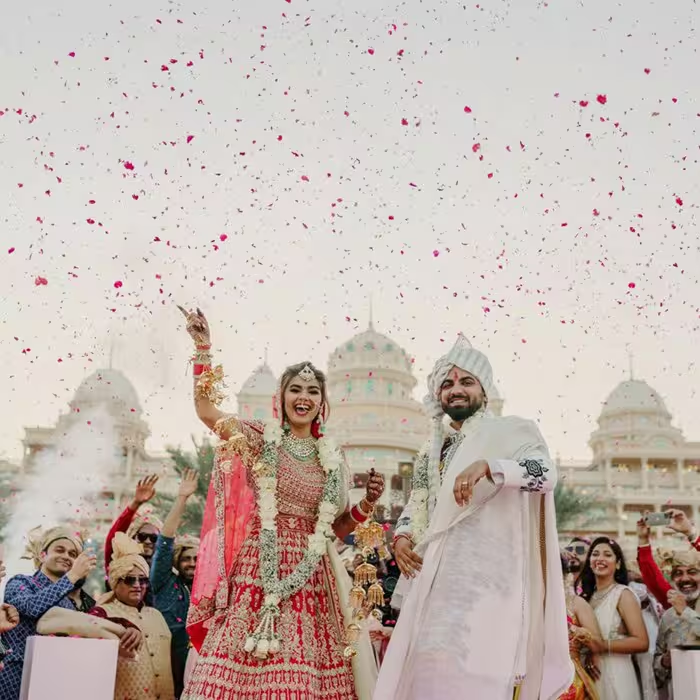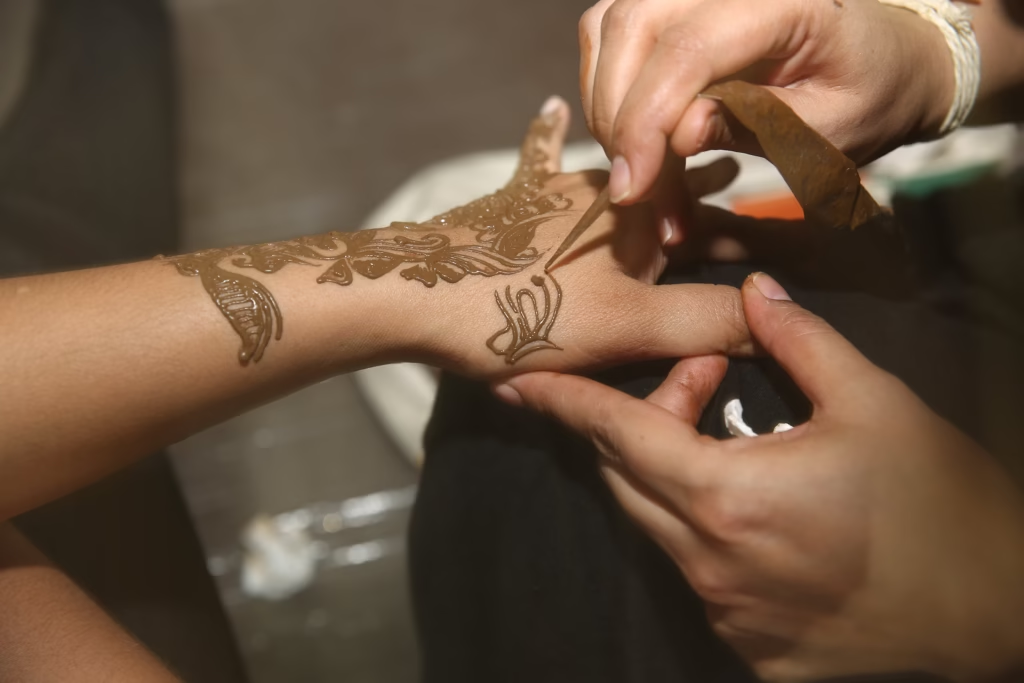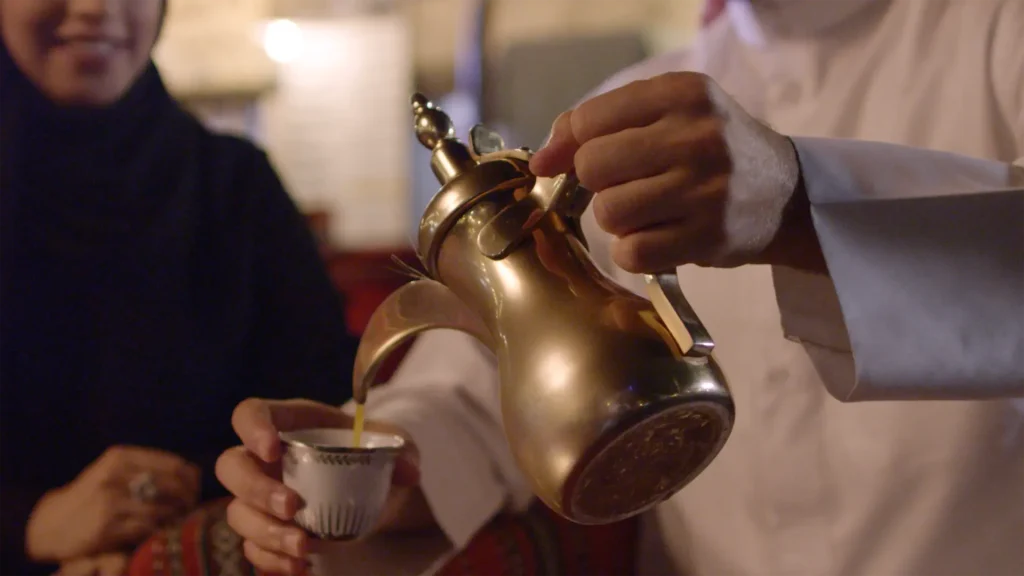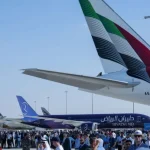The Middle East is rolling out the red carpet for Indian and international couples. But it’s not just the luxury venues, the region offers unique cultural experiences that can elevate a traditional wedding leaving even more memorable experiences than just the nuptials.

Here are five ideas that bring Emirati culture into the celebration.
1. Camel baraats
Camels are iconic to Emirati culture and instantly set a desert fairytale vibe. But they have also been featured in traditional Indian wedding processions called a baraat which symbolises the groom’s final journey to marriage. Similar to walking down the aisle, a baraat could have traditionally lasted days, but modern options are shorter and more symbolic.
Grooms using an Arabian-decorated camel to traverse the dunes before the ceremony brings an Arabian night’s feel to a traditional procession of love. Plus, for adventurous guests, camels are a fun twist and activity for travelling between venues and as an experience throughout the celebrations.
2. Al-Ayyalah dance performances
Nothing says “welcome to the Middle East” quite like the mesmerising rhythm of an Al-Ayyalah (Yowla) dance. This traditional Emirati group dance, often performed at weddings and celebrations, features two rows of men swaying and stepping in unison, twirling thin bamboo canes or replica rifles in a synchronised “dance battle” to the beat of live drums. Women participate by tossing their hair in the rhythm of the music.
These performances can be arranged during reception entrances, between dinner courses, or to kick off the evening festivities.
3. Henna with an Arabian twist

Henna isn’t just for the bride in Middle Eastern weddings, it’s an entire celebration! Across the region, the “Henna Night” is a cherished pre-wedding ritual, just like the Indian mehndi ceremony.
This is another way Emirati and Indian traditions intersect as both cultures enjoy adorning the bride, her friends, and family with intricate henna designs as a symbol of joy, beauty, and good luck. Invite a khaleeji (Gulf) henna artist alongside the mehndi artist to create bold designs.
4. Majlis-style welcome and Arabic coffee ritual
Hospitality is the heart of Middle Eastern culture, so adding a Majlis corner adds a personal touch to the venue. This traditional seating area usually features low cushions, carpets, and a Bedouin tent backdrop where guests are welcomed.
Arabic coffee poured from a brass dallah (coffee pot) and platters of dates signify generosity and warmth in Gulf culture. This is a staple at many Emirati events that can be easily recreated during a reception.

5. Falconry shows
These birds of prey are an integral part of Emirati heritage and were trained by Bedouins for hunting. Today they are a symbol of pride and prosperity. Falconry displays during cocktail hour or mehndi afternoon can excite and entertain guests. Plus, these work as a photo opportunity for a keepsake or wedding favours guests can take home.
More Emirati ideas to include are:
- Desert camping under the stars: Ideal for evening welcome dinners or post-celebration parties.
- Oud music: Similar to a guitar, this stringed instrument is commonly used in the Middle East.
- Tanoura dancers: Vibrant Egyptian folk dancers with colourful costumes as entertainment.
- Dhow cruises: Incorporate these traditional wooden boats into celebrations, for example, a welcome dinner Dhow cruise.
The Middle East is a beautiful backdrop for a wedding, and each of these elements can make it more authentic. For the Indian wedding market in particular there are plenty of crossovers in both Indian and Emirati heritage to incorporate both cultures seamlessly.
Also read: Indian weddings in the Middle East – everything you need to know


